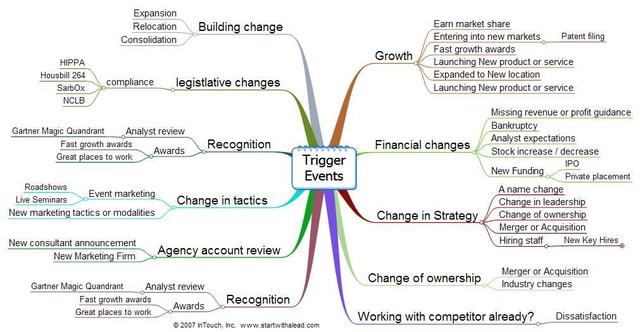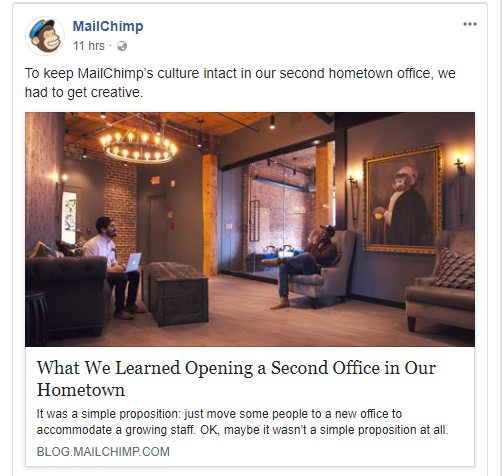Sales Trigger Events: The Ultimate Guide
Discover the Signals Behind the Fastest Growing Startups
Fundz monitors real-time fundings, executive moves, product launches & more — and delivers daily leads scored by AI. See which companies are moving today.
Try Fundz Free — See Today’s Signals →
Trusted by Top Sales Teams Worldwide
Sales Trigger Events. This isn’t just another buzzword; it's a paradigm shift in how sales are done. With an impressive potential to boost conversion rates by up to 400% according to Forrester Research, trigger events need to become front and center for many b2b companies' core GTM strategy.
Whether it's capitalizing on a company’s latest acquisition, a game-changing product launch, or an executive move, understanding and leveraging these events is now more important than ever.
What are Sales Trigger Events?
A Sales Trigger Event can be succinctly defined as a specific occurrence or change in circumstances that signals a potential business opportunity. These events can create an environment ripe for a new business deal, a renewed contract, or an up-sell or cross-sell opportunity. Essentially, they trigger (hence the name) a chain reaction in which a prospective client or existing customer becomes more inclined to engage in a purchasing conversation.
Sales trigger events can be broadly categorized into two primary types:
Internal Trigger Events:
These are changes or occurrences within a company or an individual's situation. Examples include:
Leadership changes: When a company gets a new CEO or a new decision-maker, they might be open to reviewing current processes, vendors, and tools.
Company milestones: Achieving specific growth figures, entering new markets, or launching a new product can all open doors to different needs and opportunities.
Operational shifts: Changes such as mergers, acquisitions, or even downsizing can drastically alter a company's needs.
External Trigger Events:
These relate to shifts in the broader environment which a company operates within. Examples include:
Regulatory changes: A new law or regulation can necessitate companies to adapt, creating opportunities for businesses that offer compliant solutions.
Macroeconomic trends: Economic booms or downturns, or even global events like the 2020 pandemic, can shift market dynamics considerably.
Industry-specific shifts: Consider the rise of electric vehicles in the automotive sector or the shift to e-commerce in retail.
Triggering events in strategic management, sales and marketing
Trigger events work for both B2B and B2C. But they're mostly used for B2B sales and lead generation. Triggering events in strategic management, sales, and marketing can take any form but they're mostly related to financial changes, new hires, growth, funding, change in tactics and strategy, market growth, increase in sales, new product, and increase in growth.

Here are a few B2B strategic management, sales, and marketing triggering events that you should never miss.
Strategic management: New executive, merger, layoffs, relocation, new office, change in strategy, restructuring, resizing, etc.
Sales: Increase/decrease in customer-base, sales team bonuses, sales team training, new product, increase/decrease in sales, etc.
Marketing: Increase/decrease in the marketing budget, new CMO, new target marketing, new target segment, change in the marketing channel, etc.
As soon as one of these trigger events happen, you need to be the first one to capitalize on it, get in touch by following your plan, generate a lead, and convert it.
The whole point is to get notified well before others so you get a chance to set up a phone call, send an email, or arrange a meeting. The earlier you take action, the better.
Here are 16 leading sales trigger event examples and how to track them:
1. Funding rounds
When companies announce they have raised money from investors, a significant opportunity opens up for a limited window of time. However, while its widely known funding rounds are an important sales trigger event, Harvard & Berkeley research shows you need to be the first person representing your particular type of product or service to greatly tilt the odds in your favor of ultimately winning the business.
In addition, with the number of new funding rounds down sharply since 2021, it's now more important than ever to reach out and make a connection ahead of your direct competitors and not miss a golden opportunity.
But besides having the best tool for success, you also need to be strategic. You can't just essentially convey the message "Hey, I've seen you raised some money, here is what I am selling- are you interested?"
Instead, you want to leverage this knowledge of their recent funding with an understanding of the company you are selling to and the person you are reaching out to, then tactfully align your outreach messaging around what might be their current goals and challenges.
LinkedIn and company websites are great sources of additional contact and company information, since these resources are updated by the company and person you are reaching out to, not a third party vendor.
Ultimately, the goal of your messaging should be in making a connection and getting noticed as a provider for what your company offers ahead of your direct competitor, not quickly closing a new deal, even though this can and does sometimes happen. Of course, getting a call scheduled as soon as it makes sense for the prospect and diligent follow ups are also important keys to success.
How to track: Fundz
Fundz consistently delivers faster updates on more new funding rounds, combined with verified executive contacts, better than any other platform on the market, even platforms costing 10x or 20x as much.
2. New executives
Whenever a company hires a new executive, you get a chance to reach out to him or her and establish a relationship.Why does it work? Because new executives are charged and eager to prove their value. And they are more likely to purchase your product as compared to an executive who has been with a company for years.
How to track: Fundz
3. Mergers & acquisitions
A new industry development could either mean an opportunity for your prospect or it could be a threat. Depending on how your product can help, reach out to your prospect as soon as you get the news.
How to track: Fundz
3. New customer announcements
Did your prospect announce a new customer? New customer means your prospect just received a lot of money and this is the right time to help your prospect use money for the right purpose. Watch out for new customer announcements.
How to track: Industry news, Google alerts, press release, and relevant hashtags.
4. Company expansion
Whenever your prospect’s company is expanding, you have a great chance to join hands because expansion means it will need equipment, supplies, furniture, new hires, and so on.
How to track: Google alerts, prospect’s social accounts, press release, and news sites.

5. Company relocation
When your prospect moves to a new city, that’s where they're in need of products and services. Reaching out when your prospect’s company relocates have a high chance of getting a sale.
How to track: Company website and social accounts, press release, and news sites.
6. New product/service announcement
Did your prospect launch a new product in a new target market? This means business. Depending on what you sell, a new product or service announcement means that the company will look for new vendors, equipment, services, and that’s where your product can fit.
How to track: Company website and social accounts, press release, and news sites.
7. Competitive product/service announcement
When your prospect’s competitor announces a new product, your prospect needs to make its move too. If you or your product can help at such a moment, don’t hesitate to reach out.
How to track: Industry news, press release, and social media.
8. Bad quarter
Is your prospect had a bad quarter and is losing money? You can contact and offer your product at a discount or if your product/service has the potential to help a company that’s losing money, count yourself in.
How to track: News, Google alerts, and social media.
9. Good quarter
When your prospect’s company is making money, you know what you have to do. This is the best time to contact and pitch because they have the money.
How to track: Company website and social media accounts, news, and Google alerts.
A new industry development could either mean an opportunity for your prospect or it could be a threat. Depending on how your product can help, reach out to your prospect as soon as you get the news.
How to track: Industry news.
10. Major industry development
A new industry development could either mean an opportunity for your prospect or it could be a threat. Depending on how your product can help, reach out to your prospect as soon as you get the news.
How to track: Industry news.
11. New legislation
New legislation can pose threat or bring new opportunities and if your product can be of any help to a prospect, get in touch immediately. This is one of the best moments to reach out with a helping hand.
How to track: News sites.
12. Increase in expenses
Is your prospect’s expenses on the rise? You can push your message and offer your product at a hefty discount.Or, if you offer a product that helps businesses reduce their expenses, you have your day.
How to track: Local security exchange commission website.
13. Awards
A new award won by a prospect company means it is moving in the right direction. This could be your chance to pitch your message. Provide your prospect all the information and resources it needs to stay ahead of the competition.
How to track: Company website and social media.
14. Analyst Reports
There are analysts in every industry that analyze and rank companies. Look for analyst reports in your prospect’s industry and find a way to reach out. For instance, if your prospect is ranked high, it might be interested in maintaining the same position. Or, if it was ranked low, it might be interested in products/services that will help it improve ranking. In any case, you get a chance to close a deal.
How to track: Analyst website and social media accounts.
15. Entrance into new markets
Is your prospect entering a new target market? This sounds to be a perfect trigger event that can help you land a sale. New market entrance isn’t easy and your prospect will need several resources. That’s where your product/service can fit.
How to track: Industry news.
16. Event Announcements
There isn’t any better sales trigger event than your prospect making a new event announcement. If your product is related to the event management, you can jump in.
How to track: Company website and social media accounts
Discover the Signals Behind the Fastest Growing Startups
Fundz monitors real-time fundings, executive moves, product launches & more — and delivers daily leads scored by AI. See which companies are moving today.
Try Fundz Free — See Today’s Signals →
Trusted by Top Sales Teams Worldwide
Our Quickly Growing Customer Base
Great product! I got a few sizeable contracts through Fundz, so made a video to recommend your service for my followers.
Caleb Lai, Alphaio
Just wanted to let you know I love the product and leverage Fundz along with the chrome extension every day - love it!
Caroline White - Sales Process & Productivity, Cloudflare
Fundz has been a great tool that I recommend to others.
Tony Mai - Corporate Account Executive, Snowflake
